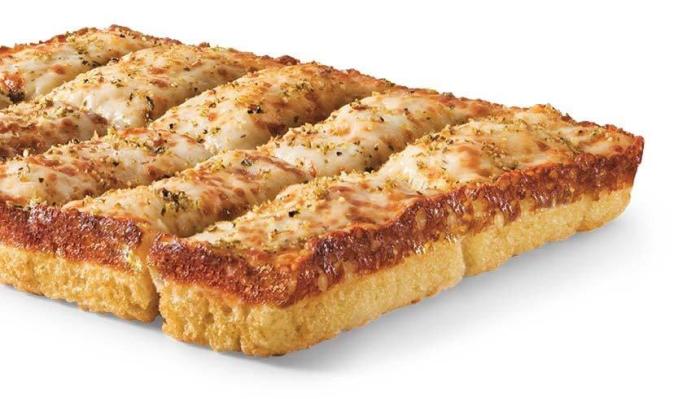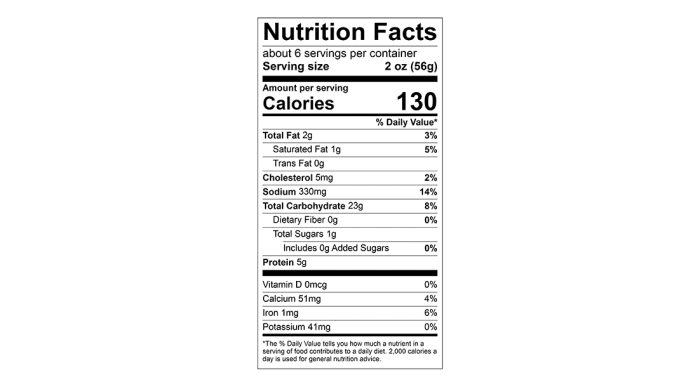Introduction to Cheese Bread

Cheese bread nutrition facts – Cheese bread, a simple yet globally beloved food, boasts a history as rich and varied as its flavors. While pinpointing an exact origin is difficult, its fundamental concept – combining cheese and bread – has existed for centuries, evolving alongside cheesemaking and baking traditions across different cultures. The specific forms and ingredients have diversified greatly, reflecting local preferences and readily available resources.Cheese bread’s appeal lies in its versatility and satisfying combination of textures and tastes.
The warm, soft bread provides a perfect counterpoint to the sharp, salty, or creamy notes of the cheese, creating a comforting and flavorful snack or meal.
Types of Cheese Bread
The diversity of cheese bread is remarkable. Regional variations abound, often showcasing locally produced cheeses and unique baking techniques. For example, Brazilian pão de queijo, a quintessential cheese bread, uses tapioca starch for a uniquely chewy texture and often features a specific type of cheese like Minas cheese. In Italy, focaccia, while not exclusively a cheese bread, frequently incorporates various cheeses, creating a savory and aromatic experience.
Similarly, many variations of savory scones and quick breads across Europe and North America incorporate cheese, showcasing the adaptability of this simple concept. Other examples include the cheesy pull-apart bread popular in many Western cuisines, and the many variations of cheesy flatbreads found throughout the Middle East and Asia.
Common Ingredients in Cheese Bread
The core ingredients of cheese bread are remarkably consistent across its diverse forms. The foundation is, of course, bread dough, which can range from simple yeast-leavened doughs to quick breads utilizing baking powder or soda. The type of flour also varies, with all-purpose flour being common, but variations using whole wheat, rye, or even cornmeal appearing in specific regional recipes.
Cheese is the star ingredient, and its selection is where much of the regional and personal variation arises. Cheddar, mozzarella, parmesan, and Gruyère are frequently used, but many other cheeses, both hard and soft, can be incorporated. Additional ingredients, often used to enhance flavor or texture, include eggs, milk or water, butter or oil, herbs, spices, and other seasonings.
Nutritional Composition of Cheese Bread

Cheese bread, a beloved comfort food, offers a delicious blend of savory cheese and fluffy bread. However, its nutritional profile can vary significantly depending on the ingredients used. Understanding this variation is key to making informed choices about consumption. This section details the typical nutritional composition of cheese bread and explores how different cheeses and added ingredients influence its nutritional value.
Cheese bread, a simple pleasure, often boasts a surprisingly high calorie count, largely due to the cheese itself. Understanding the nutritional breakdown requires looking at the individual components, including the type of cheese used; for instance, a lighter option might involve consulting resources like this page on light cream cheese nutrition facts to compare against the richer cheeses typically found in cheese bread.
Ultimately, the nutritional profile of your cheese bread hinges on the specific ingredients.
Nutritional Information for a Standard Serving of Cheese Bread
The following table provides example nutritional data for a standard serving (approximately 100g) of cheese bread made with cheddar cheese. Note that these values are approximate and can vary based on recipe and ingredients. Always refer to the specific nutritional information provided by the manufacturer or based on your own recipe calculations.
| Nutrient | Amount per Serving (100g) |
|---|---|
| Calories | 250 |
| Carbohydrates (g) | 35 |
| Protein (g) | 8 |
| Fat (g) | 10 |
| Fiber (g) | 2 |
| Sodium (mg) | 400 |
Nutritional Variations Based on Cheese Type
The type of cheese significantly impacts the nutritional content of cheese bread. For example, using a full-fat cheese like cheddar will result in a higher calorie and fat content compared to using a lower-fat cheese like part-skim mozzarella. Cheeses with higher moisture content will contribute to a higher carbohydrate count. Conversely, harder cheeses, like parmesan, tend to be lower in moisture and higher in protein.
The sodium content also varies considerably depending on the cheese; some cheeses are naturally higher in sodium than others. A cheese bread made with feta cheese will have a different sodium and fat profile compared to one made with Swiss cheese.
Impact of Added Ingredients on Nutritional Profile
Adding ingredients such as herbs, spices, nuts, or seeds can alter the nutritional profile of cheese bread. Herbs and spices generally contribute minimal calories but add flavor and potential antioxidant benefits. Adding nuts, like walnuts or pecans, increases the calorie, fat, and fiber content, also contributing healthy fats and protein. Seeds, such as sunflower or sesame seeds, offer additional fiber, healthy fats, and minerals.
However, the addition of these ingredients should be considered in the context of overall dietary goals. For instance, excessive addition of nuts might significantly increase the overall calorie count, while the addition of seeds could increase the fiber content.
Macronutrient Breakdown

Cheese bread, like other bread varieties, derives its energy from a combination of carbohydrates, proteins, and fats. The precise proportions vary depending on the recipe, the type of cheese used, and the ingredients added. Understanding this macronutrient profile is crucial for making informed dietary choices.A typical serving of cheese bread (approximately 100g) might contain roughly 40-50% carbohydrates, 15-20% protein, and 25-35% fat.
This is a broad estimate, and the actual values will differ based on the specific recipe. For instance, cheese bread made with whole wheat flour will have a higher carbohydrate content from fiber, while a recipe using a significant amount of cheese will have a higher fat content.
Macronutrient Comparison with Other Breads
The macronutrient profile of cheese bread differs considerably from other common bread types. White bread typically has a higher carbohydrate percentage, with a lower protein and fat content compared to cheese bread. Whole wheat bread, on the other hand, boasts a higher fiber content within its carbohydrate profile, resulting in a more complex carbohydrate structure and increased protein compared to white bread, but still generally lower fat than cheese bread.
The addition of cheese significantly alters the macronutrient balance, leading to a higher fat and protein content than both white and whole wheat bread.
Visual Representation of Macronutrient Breakdown, Cheese bread nutrition facts
Imagine a pie chart divided into three sections representing carbohydrates, proteins, and fats. For a typical cheese bread serving, the carbohydrate section would occupy the largest portion, approximately 40-50% of the chart. The fat section would be noticeably smaller than the carbohydrate section, representing 25-35% of the chart. The protein section would be the smallest, accounting for 15-20% of the chart.
To illustrate the differences, we could compare this to a similar pie chart for white bread, where the carbohydrate section would be even larger, with the protein and fat sections significantly smaller. A whole wheat bread chart would show a slightly smaller carbohydrate section, a slightly larger protein section, and a small fat section, reflecting its higher fiber and protein content.
These visual comparisons clearly demonstrate the differences in macronutrient composition between cheese bread and other bread types.
General Inquiries: Cheese Bread Nutrition Facts
Is cheese bread okay for weight loss?
It depends! Portion control is key. A small slice here and there probably won’t derail your goals, but it’s not exactly a diet staple.
What kind of cheese is best for lower-calorie cheese bread?
Lower-fat cheeses like part-skim mozzarella or reduced-fat cheddar can help keep the calories down. But remember, even “light” cheese still has calories!
Can I make healthier cheese bread at home?
Totally! Use whole wheat flour, reduce the cheese, and add veggies for extra fiber and nutrients. It’s all about making swaps!
Is cheese bread a good source of protein?
It has some protein, but it’s not a primary source. You’ll get more protein from lean meats, beans, or nuts.




